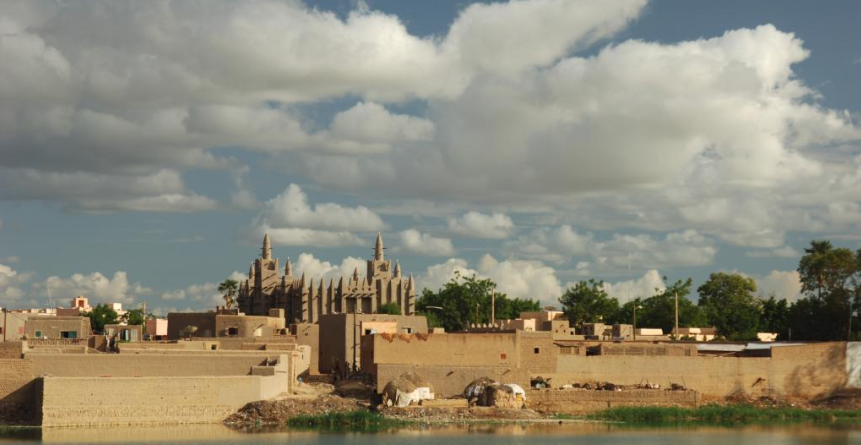By Rida Lyammouri
June 20th, 2016

View of a mosque at Mopti, Mopti region, central Mali. Source: RFI
On June 19th a new armed group emerged in central Mali, Alliance Nationale pour la Souvegarde de l’Identité Peule et la Restauration de la Justice (ANSIPRJ), roughly translated to the National Alliance for the Protection of Fulani Identity and the Restoration of Justice. The movement is reportedly a political-armed group, non-jihadist, and not seeking independence from Mali. However it is created primarily for the purpose to defend the Fulani people of Mali against the Malian Army and Militias, according to the group’s secretary general identified as Oumar Aldjana. Mr. Aldjana stated the group is made of 700 fighters, and has some backing among Malian politicians and Fulani diaspora.
This in response to the way Malian Army and government handled reports of abuse against Fulani civilians. In April 2016 Kawral Poulakou, Malian association of Fulani community led by Mr. Aldjana requested meeting with Malian authorities to discuss alleged killing of Fulani civilians suspected of ties with the Macina Liberation Front (MLF).The MLF is a group that emerged early 2015 with ties to other jihadist groups operating in Mali, notably Ansar al-Din and al-Qaeda in the Islamic Maghreb (AQIM). Because there was no response from the Malian government now Mr. Aldjana said: “Our enemy number one on the ground now is the Malian Army that continues to arm militias against Fulani civilians.” The movement accuse the Malian Army of unfair treatment of Fulani civilians arrested. Since January 2015 several acts of abuse by the Malian Army against Fulani civilians and suspects were recorded according to Human Rights Watch recorded.
The creation of this new group came during a time when inter-community tensions causing major concerns in central Mali, as the International Crisis Group (ICG) warned. Little attention was given to the conflict when international community and Malian government are focused on the implementation of the peace accord in northern Mali. However the attention central Mali is getting it is mostly related to the MLF and concerns about jihadist groups, not tribal tensions. True that violence in central Mali was dominated by attacks conducted by the MLF but the region witnessed a noticeable increase in deadly inter-community clashes since December 2015, especially between Fulani and Bambara communities.
As it did so often Malian Army and central government are mishandling central Mali conflict, and there are already some regrettable consequences. In response to Malian Army acts, members of Fulani community released a video in May 2015 calling all Fulani youth to fight the Malian Army and Bambara community. There was no reference in the video to the MLF but surely Mali was about to loose a key ally, at least part of Fulani community, in an area where there is an ongoing fight against a violent extremist organization, the MLF. Although the new group claim to have no ties with the MLF and is non-jihadist, it also claimed that Malian Army is its enemy number one. As a result the presence of an anti-Mali armed group in the region will further complicate efforts against the MLF and allies. The MLF and ANSIPRJ might not share same ideology but both have same enemy [Malian Army], and tribal ties. As a result failure to address the issue collaboration remains a valid possibility.

